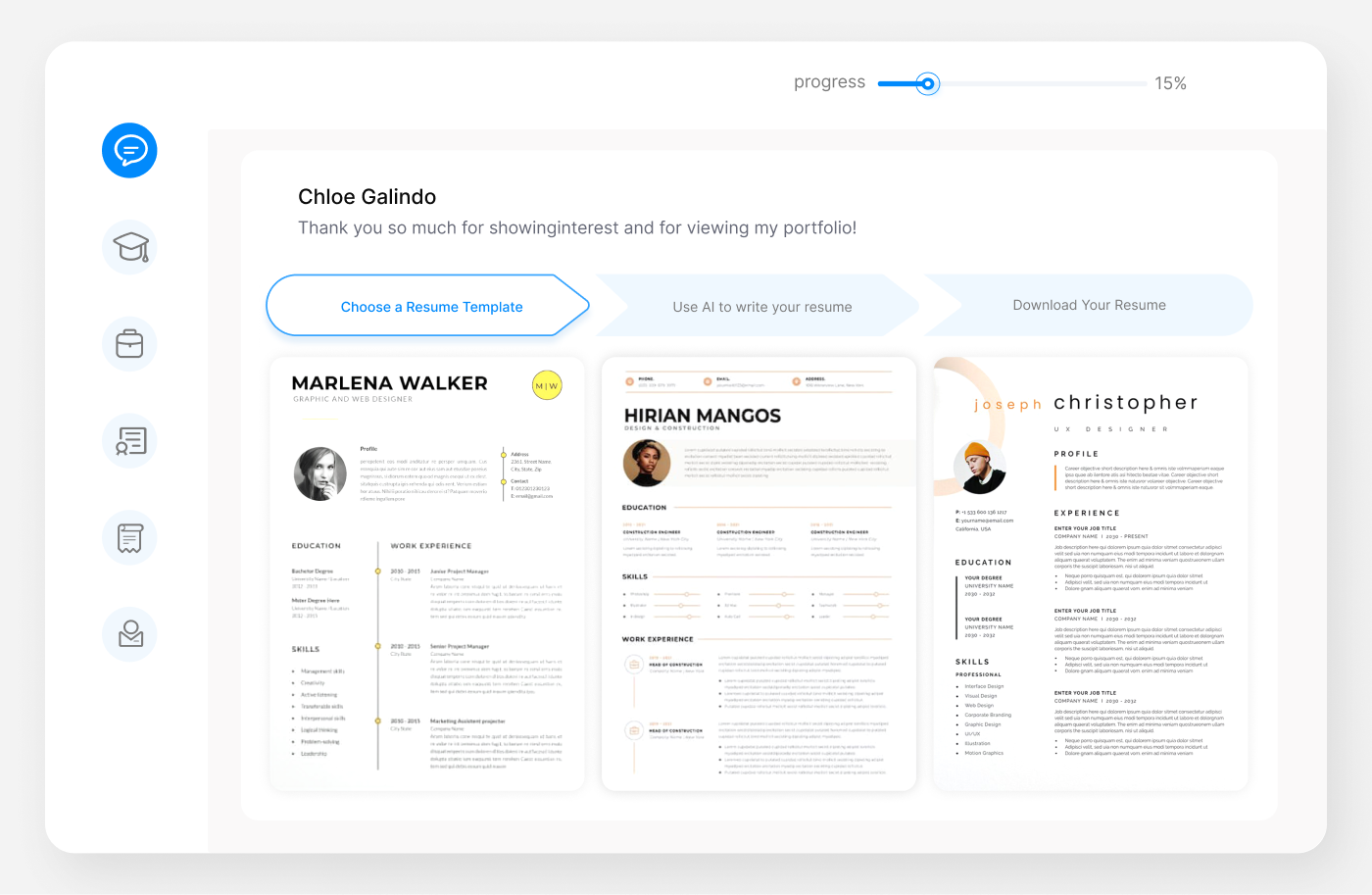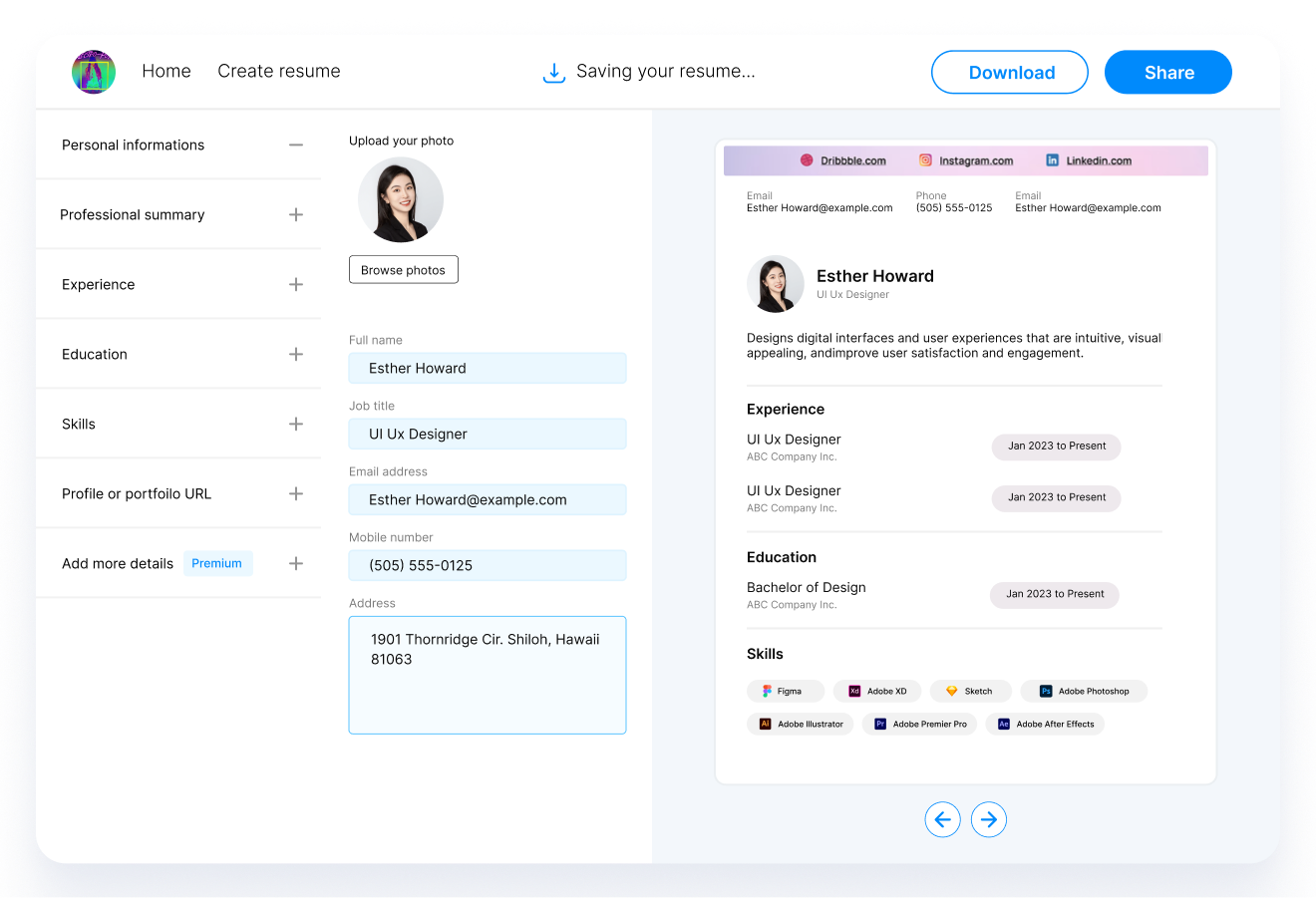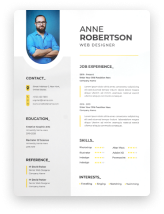In this guide, we delve into the intricacies of problem-solving skills, an indispensable competency in today's dynamic work environment. We not only define what constitutes effective problem-solving but also provide actionable strategies to develop and showcase these skills. Whether you're looking to enhance your resume, prepare for an interview, or simply improve your ability to tackle challenges in the workplace, this guide offers insights into making problem-solving your professional superpower.

Introduction: The Importance of Problem-Solving Skills
In an ever-evolving professional landscape, the ability to solve problems effectively stands as a cornerstone skill, crucial across all industries. Whether it's navigating through technological changes, handling client issues, or finding creative solutions in a crunch, problem-solving skills enable professionals to manage challenges efficiently and innovatively. Understanding and honing these skills not only makes you a valuable asset to your organization but also positions you as a strong candidate in the job market. In this section, we explore the relevance of problem-solving skills in a career context and their growing importance in the modern workplace.
Defining Problem-Solving Skills
Problem-solving skills are a complex blend of analytical and creative thinking used to identify, analyze, and solve problems. These skills involve a systematic process that starts with understanding a problem, devising a plan, implementing a solution, and evaluating the results. At its core, problem-solving is about using logic, as well as imagination, to make sense of a situation and come up with an effective solution.
Core Components of Problem-Solving
Problem-solving begins with identifying and defining the problem. This may seem simple, but it often requires critical thinking to understand the root cause of an issue. Once the problem is clearly defined, the next step is to explore potential solutions and decide on the best course of action. This process involves analytical skills to break down the problem and evaluate the solutions from different angles.
Problem-Solving: A Blend of Analytical and Creative Thinking
Effective problem-solving is not just a logical process; it also involves creative thinking. This is where innovation comes into play. Sometimes, the most effective solutions come from out-of-the-box thinking, challenging the status quo, and looking at the problem from a fresh perspective.
Categories of Problem-Solving Skills
Problem-solving encompasses a variety of skills, each playing a vital role in handling different aspects of an issue. Understanding these categories can help you identify your strengths and areas for improvement, enabling you to approach problems more effectively.
Analytical Skills: Breaking Down Complex Problems
Analytical skills are crucial for dissecting problems and understanding their components. These skills involve data analysis, logical reasoning, and the ability to recognize patterns and cause-and-effect relationships. For instance, a financial analyst might use analytical skills to dissect a complex budget and identify areas for cost reduction.
Creative Thinking: Innovative Approaches to Solutions
Creative thinking pushes the boundaries of traditional methods and finds novel solutions to problems. This skill is especially valuable when conventional approaches fail or are inefficient. For example, a marketing professional may use creative thinking to develop a unique advertising campaign that stands out in a crowded market.
Decision Making: Choosing the Right Path
Decision-making is a critical component of problem-solving. It involves evaluating different solutions and selecting the most effective one. Good decision-makers consider the pros and cons of each option and make choices that align with their goals and values.
Critical Thinking: Evaluating Options and Outcomes
Critical thinking is the ability to think clearly and rationally, understanding the logical connection between ideas. It involves questioning assumptions, evaluating evidence, and considering the implications of decisions. For example, a project manager might use critical thinking to assess the risks of a project and develop strategies to mitigate them.
Developing Problem-Solving Skills
Enhancing your problem-solving skills is a journey that involves self-awareness, practice, and continuous learning. Here's how you can identify and develop these vital skills.
Identifying Your Current Problem-Solving Abilities
Begin by assessing your current problem-solving skills. Reflect on past situations where you successfully solved a problem. What skills did you use? Were you more analytical or creative? Did you act decisively or take time to evaluate multiple options? Understanding your natural approach to problem-solving can help you identify areas for development.
Strategies to Enhance Your Problem-Solving Skills
-
Practice with Real Problems: Regularly challenge yourself with real-world problems. This could be in your professional environment or through case studies related to your field.
-
Learn from Others: Observe how experienced professionals solve problems. This can provide insights into different approaches and techniques.
-
Educational Resources: Utilize books, online courses, and workshops focused on critical thinking and problem-solving.
-
Cross-Functional Collaboration: Engage with colleagues from different departments. This exposure can provide new perspectives and problem-solving methods.
-
Feedback and Reflection: After solving a problem, seek feedback and reflect on your process. What worked well? What could have been done differently?
Problem-Solving in Different Industries
Problem-solving skills are universally valuable, but their application can vary significantly across different industries. Understanding how these skills are applied in various sectors can provide insights into their versatility and necessity.
Examples from Tech and IT
In the technology and IT sector, problem-solving often involves addressing software bugs, optimizing system performance, and developing new technological solutions. For instance, a software engineer might need to identify the root cause of a system crash and devise an efficient solution to prevent future issues.
Case Studies in Healthcare
Healthcare professionals regularly employ problem-solving skills to diagnose and treat patient conditions, improve care delivery, and streamline administrative processes. A nurse, for instance, might need to quickly assess a patient's symptoms and decide on the most appropriate course of action.
Problem-Solving in Finance and Business
In finance and business, problem-solving is key to identifying market trends, optimizing financial strategies, and improving operational efficiency. A financial analyst, for example, might analyze market data to solve investment challenges and provide strategic advice to clients.
Problem-Solving in Team Environments
Collaborative problem-solving in team environments is crucial for leveraging diverse perspectives and expertise. Here, we explore the dynamics of team problem-solving and the role of leadership in guiding teams through challenges.
Collaboration and Collective Problem-Solving
In a team setting, problem-solving becomes a collective effort where members contribute their unique skills and perspectives. Effective collaboration requires clear communication, respect for different viewpoints, and a willingness to compromise. For example, in a cross-functional team, members from different departments must work together to develop a solution that considers all aspects of the problem.
Leadership and Guiding Teams Through Challenges
Leaders play a critical role in guiding their teams through problem-solving processes. They must foster an environment where team members feel safe to express their ideas and concerns. Leaders also need to ensure that the team stays focused on the goal and moves forward in a constructive manner. For instance, a project manager might facilitate brainstorming sessions, help the team prioritize solutions, and ensure that each member's voice is heard.
Technological Tools for Problem-Solving
In the digital age, technology plays a pivotal role in problem-solving across various fields. Understanding and utilizing the right technological tools can significantly enhance your problem-solving capabilities.
Software and Apps to Aid in Problem-Solving
There are numerous software and applications designed to assist in problem-solving. For instance, project management tools like Asana or Trello help organize tasks and streamline collaboration. Data analysis tools like Excel or Tableau offer powerful functionalities for analyzing complex data sets, enabling more informed decision-making.
The Role of AI and Machine Learning
Artificial Intelligence (AI) and Machine Learning (ML) are revolutionizing problem-solving in many sectors. These technologies can analyze large volumes of data, identify patterns, and even predict future trends, which can be invaluable in developing effective solutions. For example, in healthcare, AI algorithms can assist in diagnosing diseases based on patient data.
Problem-Solving in Crisis Management
Effective problem-solving is particularly crucial during crisis situations, where timely and decisive action is essential. Here, we examine strategies for responding to unforeseen challenges and highlight case studies of effective crisis problem-solving.
Responding to Unforeseen Challenges
In crisis situations, problem-solving skills need to be applied rapidly and efficiently. This often involves quickly assessing the situation, identifying immediate steps to mitigate the impact, and developing a long-term solution. For example, in a natural disaster, emergency response teams must quickly assess the damage and coordinate rescue and relief efforts.
Case Studies of Effective Crisis Problem-Solving
Analyzing real-world case studies of crisis management can provide valuable insights into effective problem-solving under pressure. For instance, the response to a cybersecurity breach in a corporation involves not only resolving the security issue but also managing communication with stakeholders and implementing measures to prevent future incidents.
Measuring Problem-Solving Skills
Evaluating and measuring problem-solving skills can be challenging due to their subjective and situational nature. However, certain metrics and practices can be used to assess these skills effectively.
Metrics and KPIs for Evaluating Problem-Solving Ability
In a professional setting, Key Performance Indicators (KPIs) such as the time taken to resolve issues, the number of problems solved, and the quality of solutions implemented can be used to measure problem-solving efficiency. For instance, in customer service, metrics like average resolution time and customer satisfaction scores can indicate the effectiveness of problem-solving skills.
Self-Assessment and Feedback Loops
Regular self-assessment is crucial for understanding and improving your problem-solving abilities. Reflect on recent challenges you have faced and how you addressed them. Additionally, seeking feedback from peers, supervisors, or mentors can provide external perspectives on your problem-solving approach and areas for improvement.
Problem-Solving and Emotional Intelligence
The interplay between emotional intelligence (EQ) and problem-solving is often overlooked, yet it plays a crucial role in how effectively individuals navigate difficult problems, particularly in interpersonal and high-stress situations.
The Interplay Between EQ and Problem-Solving
Emotional intelligence involves self-awareness, self-regulation, empathy, motivation, and social skills. These components of EQ can significantly influence problem-solving effectiveness. For example, self-regulation helps maintain focus and composure during challenging problem-solving scenarios, while empathy allows for better collaboration and understanding of different perspectives in a team.
Managing Emotions While Navigating Difficult Problems
Effectively managing emotions is key to clear thinking and effective problem-solving, especially under stress. Techniques such as mindfulness, active listening, and stress management can help maintain emotional balance, enhancing your ability to think critically and creatively when solving problems.
Problem-Solving in Project Management
Problem-solving is an integral part of project management, crucial for navigating the challenges and obstacles that arise during project execution. Here, we explore the role of problem-solving in successful project delivery and the tools and techniques used in project-based problem-solving.
Role of Problem-Solving in Successful Project Execution
Effective project management requires continuous problem-solving to deal with resource constraints, deadline pressures, and scope changes. For example, a project manager might have to find a solution to keep a project on track despite unexpected resource shortages or changing client requirements.
Tools and Techniques for Project-Based Problem-Solving
Several tools and techniques can assist in problem-solving within project management. These include risk assessment matrices, SWOT analysis, Gantt charts, and project management software like Microsoft Project or Asana. These tools help in identifying potential problems, planning responses, and monitoring progress.
Showcasing Problem-Solving Skills on Your Resume
Articulating your problem-solving skills on a resume is crucial to demonstrate your ability to handle workplace challenges effectively. Here, we focus on how to express these skills for different job roles and make your resume stand out.
Articulating Problem-Solving Skills Effectively
Highlight specific instances where you've successfully solved problems. Use action verbs and quantify the impact of your solutions. For example, rather than stating "Solved customer complaints," specify "Resolved 30+ customer complaints weekly, improving customer satisfaction by 40%."
Tailoring Your Skills to Different Job Roles
Different roles may require different aspects of problem-solving. For instance, a software developer might emphasize technical problem-solving skills, while a marketing professional might focus on creative and strategic problem-solving abilities. Tailor your resume to align with the specific requirements of the job you're applying for.
Interviews and Demonstrating Problem-Solving
Interviews provide a prime opportunity to demonstrate your problem-solving skills. Here, we discuss how to prepare for problem-solving questions and use case study examples to illustrate your skills during interviews.
Preparing for Problem-Solving Questions
Anticipate common problem-solving questions and prepare structured responses using the STAR method (Situation, Task, Action, Result). Practice articulating your thought process and the steps you took to resolve past challenges.
Case Study Examples for Interview Scenarios
Use specific examples from your professional experience to illustrate your problem-solving process. For instance, describe a situation where you identified a problem, analyzed the options, implemented a solution, and the outcome of your actions. Ensure these examples are relevant to the role you are interviewing for.
Building a Problem-Solving Mindset
Developing a problem-solving mindset involves cultivating a proactive approach to challenges and embracing continuous learning and adaptability. This section explores how to nurture this mindset for personal and professional growth.
Cultivating a Proactive Approach to Problems
A proactive problem-solving mindset means actively seeking solutions and anticipating potential issues before they escalate. This involves being curious, asking insightful questions, and not shying away from challenges. For example, regularly review your work processes to identify areas for improvement, even if they are currently working well.
Continuous Learning and Adaptability
The ability to adapt and learn is crucial in a constantly changing professional environment. Stay updated with industry trends, learn from both successes and failures, and be open to new ideas and approaches. This adaptability not only enhances your problem-solving skills but also prepares you for future challenges.
Problem-Solving and Career Advancement
Leveraging problem-solving skills can significantly influence your career progression and opportunities for promotion. In this section, we explore how strong problem-solving abilities contribute to long-term career success.
Leveraging Problem-Solving Skills for Promotion
Demonstrating effective problem-solving skills can lead to recognition and advancement within an organization. Employers value employees who can independently handle challenges and drive improvements. Showcasing your problem-solving successes during performance reviews or discussions about career growth can bolster your case for promotion.
Long-Term Career Benefits of Strong Problem-Solving Abilities
Problem-solving skills are highly transferable and beneficial across various roles and industries. They enhance your adaptability, make you more marketable as a professional, and open doors to leadership and high-level strategic positions. Consistently developing and demonstrating these skills can lead to a more dynamic and rewarding career path.
Networking and Collaborative Problem-Solving
Effective networking and collaboration are essential for solving complex problems that require diverse perspectives and expertise. This section explores the benefits of building relationships through problem-solving and leveraging your network for innovative solutions.
Building Relationships Through Problem-Solving
Networking isn't just about expanding your professional contacts; it's also about building relationships where mutual problem-solving plays a key role. Engaging with your network to solve problems can lead to more meaningful connections and opportunities for collaboration. For instance, discussing a technical challenge with a peer from a different company could provide fresh insights or innovative approaches.
Leveraging Your Network for Diverse Solutions
A diverse network can offer a wide range of viewpoints and expertise, which is invaluable for complex problem-solving. Don't hesitate to reach out to your contacts for advice or brainstorming sessions. This collaborative approach not only helps in finding better solutions but also strengthens your professional relationships.

Overcoming Common Problem-Solving Challenges
Effective problem-solving often involves navigating through ambiguity and complexity. This section addresses common challenges in problem-solving and strategies to tackle them effectively.
Dealing with Ambiguity and Uncertainty
In many situations, all the information needed to solve a problem may not be available, leading to ambiguity. In such cases, rely on your judgment, break down the problem into smaller parts, and tackle what you can. Use logical reasoning and past experiences to fill in gaps and make informed decisions.
Strategies for Complex and Multi-Faceted Problems
Complex problems often have multiple layers and stakeholders involved, making them challenging to solve. Employ a systematic approach: define the problem, gather relevant information, identify various options, evaluate them, and then implement the solution. Remember to communicate effectively with all stakeholders involved to gain different perspectives and buy-in.
Future Trends in Problem-Solving Skills
Staying ahead in a rapidly evolving professional world requires anticipating future trends in problem-solving. This final section explores the evolving nature of workplace problem-solving and how you can prepare for upcoming challenges and opportunities.
Anticipating the Evolution of Workplace Problem-Solving
As industries evolve, so do the nature of problems and the skills needed to solve them. Technological advancements, for instance, are constantly changing the way problems are identified and solved. Staying informed about industry trends and emerging technologies can help you adapt your problem-solving approach to future challenges.
Preparing for Future Challenges and Opportunities
To prepare for future problem-solving scenarios, focus on developing a broad skill set that includes technical proficiency, emotional intelligence, and adaptability. Cultivate a mindset of lifelong learning and be open to experimenting with new strategies and tools. This proactive approach will equip you to handle whatever challenges the future may hold.
Recommended Reading





